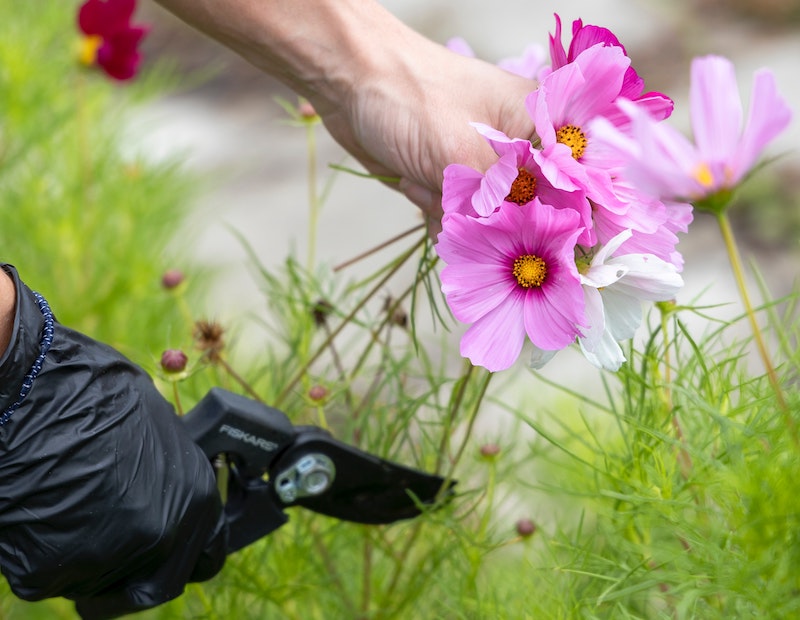Annuals require two specific types of pruning that, when done regularly throughout their short lives, will provide a gardener with continuous flowering. Pinching back of the earliest flowers and later deadheading of the spent flowers encourage all annuals to continue producing flowers instead of ripening and dispersing seeds.

When to Prune Annuals
Pinching out of stem tips and flowers encourages dense branching in annual plants and needs to be done very early in the growing season before the first flowers open. This stimulates more flower buds and leaves to form farther down the stem. Deadheading is the other type of pruning for annuals, which is done throughout the growing seasons. Deadheading means removing any spent flowers before they can set and ripen seed. The plant responds to deadheading by producing more flower buds to produce seeds.
Annuals only survive one growing season and are programmed to begin setting seeds quickly for reproduction. Annual plants are some of the easiest seeds to save from year to year, and the gardener can modify the amount of seed produced by deadheading early in the season and then allowing some of the flowers to set seed later in the summer for saving.
Annual plants not pinched back early in the growing season will produce fewer and possibly shorter stems for flowering. Professional growers will pinch plants back to a certain number of branches to encourage plants to direct their energy into forming much larger flowers.

Why Prune Annuals
Annuals not pinched or deadheaded will fail to thrive late into the growing season. These plants have one mission during their short time alive: to set seeds for reproduction. When the flowers are removed, the plants are triggered into producing more. A classic annual that flowers quickly is basil. Removing the flowers keeps the plant producing the delicious leaves longer in the summer, but it will begin to send up flower stems quicker as the days get shorter through the summer. The plant is desperately trying to ripen seed before the warm weather of summer is over, but the gardener can keep harvesting the foliage as long as the plants are deadheaded.

How to Prune Annuals
Step 1 - Pinch back the first flower buds that form.
With your thumb and forefinger, gently pinch out the flower bud as close to the next set of leaves or buds as you can get. Some gardeners use narrow-bladed garden snips to ensure they do not disturb other leaf or flower buds.
Step 2 - Continue to pinch back some annuals through the growing season.
Some plants grown as annuals, such as fall-blooming mums, can be kept to a smaller, compact size and forced into later flowering if the stems are pinched back many times until mid-summer. Traditionally the 4th of July is the last time that fall-blooming mums should be pinched back to encourage late summer and fall blooming. Not cutting mums back will result in earlier blooming and much taller plants.
Step 3 - Deadhead spent flowers throughout the growing season.
Cut the spent flowers back to the next set of leaves to encourage more buds to form and keep the plant's overall shape compact and neat.
Annual Pruning Tips
- Pinch back the first flower buds to encourage more and larger flowers throughout the growing season
- Some annuals can be encouraged to bloom later in the season when they are pinched back regularly
- Regular deadheading of spent flowers results in a longer blooming season for most annuals.
This page contains affiliate links to products on Amazon. We may receive a commission for purchases made through these links.
 |
Author Robbin Small - Published 1-12-2023 |
